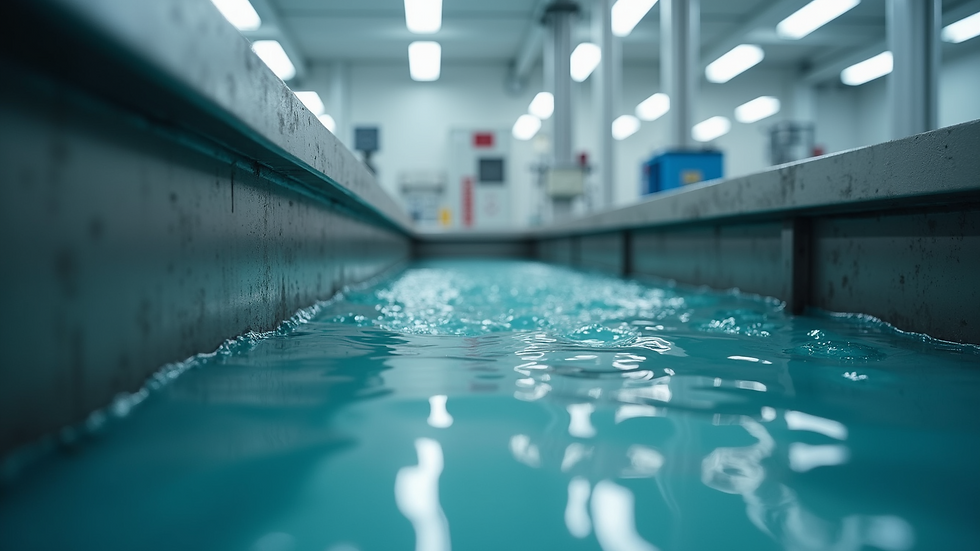Innovative Solutions in Advanced Sewage Treatment
- palwinder kaur
- Aug 11
- 3 min read
Sewage treatment is a critical aspect of modern infrastructure, ensuring that wastewater is safely processed before being released back into the environment. With increasing urbanization and environmental concerns, traditional sewage treatment methods are no longer sufficient. Innovative sewage solutions are emerging to address these challenges, offering more efficient, sustainable, and cost-effective ways to manage wastewater. This article explores some of the latest advancements in sewage treatment technology and how they are transforming the industry.
Innovative Sewage Solutions Transforming Wastewater Management
The demand for cleaner water and stricter environmental regulations have driven the development of innovative sewage solutions. These solutions focus on improving the efficiency of treatment processes, reducing energy consumption, and minimizing the environmental footprint. Some of the most promising technologies include:
Membrane Bioreactors (MBRs): Combining membrane filtration with biological treatment, MBRs provide high-quality effluent suitable for reuse. They are compact and can handle high organic loads.
Advanced Oxidation Processes (AOPs): These use powerful oxidants like ozone or hydrogen peroxide to break down complex pollutants that are difficult to remove by conventional methods.
Anaerobic Digestion with Biogas Recovery: This process treats sludge while producing biogas, a renewable energy source, reducing greenhouse gas emissions.
Constructed Wetlands: Engineered ecosystems that use plants and microorganisms to naturally treat wastewater, offering a low-energy and sustainable option.
These technologies not only improve treatment outcomes but also contribute to resource recovery and environmental protection.

What is an Advanced Treatment Septic System?
An advanced treatment septic system is a step beyond traditional septic tanks, designed to treat wastewater more thoroughly before it reaches the soil or groundwater. These systems incorporate additional treatment stages such as aeration, filtration, and disinfection to reduce contaminants significantly.
Key features of advanced treatment septic systems include:
Aerobic Treatment Units (ATUs): These introduce oxygen to promote the growth of beneficial bacteria that break down organic matter more efficiently.
Sand or Media Filters: Used to physically remove suspended solids and pathogens.
Disinfection Units: Often using ultraviolet (UV) light or chlorination to kill harmful microorganisms.
These systems are particularly useful in areas with high water tables, sensitive ecosystems, or where conventional septic systems are not effective. They help protect public health and the environment by ensuring that effluent meets higher quality standards.

Emerging Technologies in Sewage Treatment
The field of sewage treatment is rapidly evolving with the integration of digital technologies and novel materials. Some emerging trends include:
Smart Monitoring and Automation: Sensors and IoT devices enable real-time monitoring of treatment processes, allowing for timely adjustments and predictive maintenance. This reduces downtime and operational costs.
Nanotechnology: Nanomaterials are being explored for their ability to adsorb pollutants and enhance disinfection processes.
Algae-Based Treatment Systems: Algae can absorb nutrients and produce biomass that can be converted into biofuels, creating a circular economy approach.
Electrochemical Treatment: Using electric currents to degrade pollutants, this method is effective for removing heavy metals and organic contaminants.
These innovations promise to make sewage treatment more adaptive, efficient, and environmentally friendly.

Practical Recommendations for Implementing Innovative Sewage Solutions
For municipalities, industries, and communities looking to upgrade their sewage treatment infrastructure, the following recommendations can guide successful implementation:
Conduct a Comprehensive Assessment: Understand the specific wastewater characteristics, regulatory requirements, and environmental conditions.
Choose Appropriate Technology: Select solutions that match the scale, budget, and treatment goals. For example, MBRs are suitable for urban areas with limited space, while constructed wetlands fit rural settings.
Invest in Skilled Personnel: Proper operation and maintenance are crucial for advanced systems to perform optimally.
Engage Stakeholders: Involve local communities, regulators, and environmental groups early in the planning process to ensure acceptance and compliance.
Plan for Resource Recovery: Consider technologies that enable energy generation, nutrient recovery, or water reuse to maximize benefits.
By following these steps, stakeholders can achieve sustainable and effective sewage treatment outcomes.
The Future of Wastewater Treatment and Environmental Impact
The future of wastewater treatment lies in integrating innovative sewage solutions with sustainable practices. As water scarcity and pollution concerns grow, the ability to treat and reuse wastewater safely will become increasingly important. Advanced treatment methods will play a vital role in:
Protecting Water Resources: By removing contaminants more effectively, treated water can be safely returned to rivers, lakes, or reused for irrigation and industrial processes.
Reducing Carbon Footprint: Energy-efficient technologies and biogas recovery reduce greenhouse gas emissions.
Supporting Circular Economy: Recovering nutrients and energy from wastewater transforms waste into valuable resources.
Enhancing Public Health: Improved treatment reduces exposure to pathogens and harmful chemicals.
For more detailed insights and updates on advanced sewage treatment, exploring specialized resources and case studies can provide valuable guidance.
Innovative sewage solutions are not just about technology; they represent a commitment to a cleaner, healthier, and more sustainable future.



Comments